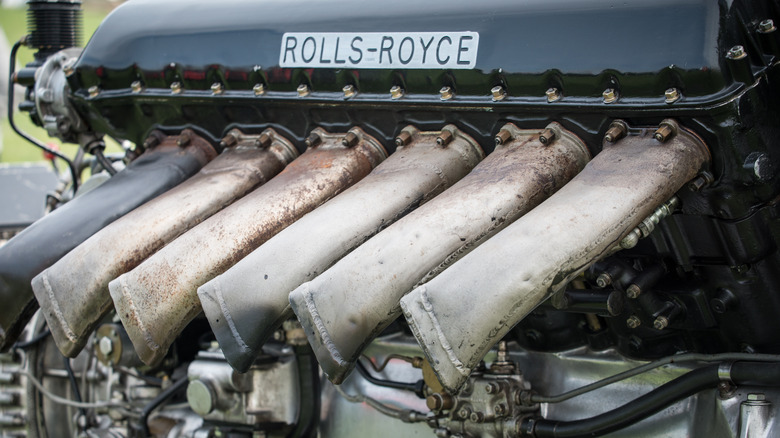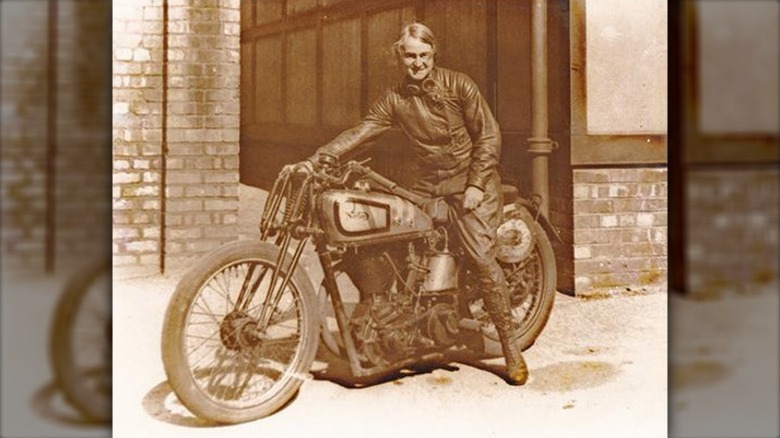How One Woman's Simple, Yet Genius Invention Helped Win The WWII Air War
The Battle of Britain was one of the great turning points of WWII. The air battle — fought largely over Southern England — was a vital victory for the Allies. From a morale point of view, it proved that the German war machine was not invincible. From a strategic point of view, the Battle of Britain put paid to Hitler's plans to invade Britain. At the heart of this air battle were two legendary British fighter planes — the iconic Spitfire and the often-underappreciated Hurricane, both of which were powered by the equally legendary Rolls-Royce Merlin engine.
It's this engine that's at the center of this story. While it certainly earned its legendary status, it wasn't without flaws. Unlike the fuel-injected engines used in German fighters of the time, the Merlin used a carburetor. This carburetor had the unfortunate tendency to flood and stall the engine when an aircraft entered a negative g-force dive, which was often the case in dogfights. Despite this drawback, the RAF defeated the Luftwaffe, and the Battle of Britain was won. However, it was obvious that the Merlin engine problem needed to be addressed. Enter Beatrice "Tilly" Shilling and her genius device. Officially, the device was called the RAE restrictor, but it became more fondly known as Miss Shilling's orifice. Beatrice Shilling's solution to the stalling issue was a simple metal disc with a hole in it. This elegant solution stopped the carburetor from flooding by regulating fuel flow, thus preventing the engine from stalling at crucial moments.
The remarkable Miss Shilling
There are certain people who just break the mold. Beatrice "Tilly" Shilling was one of these. She hailed from an age when it was difficult for women to become engineers, and she was one of only two women students on her electrical engineering degree course. For Shilling, engineering had been her calling. From early childhood, Beatrice was happier playing with a Meccano set and a pot of glue than with dolls and tea sets. But engineering wasn't her only passion. She also raced motorcycles, most famously lapping the Brooklands track at 106 mph on a Norton M30 500cc bike that she'd rebuilt and tuned herself.
She joined the Royal Aircraft Establishment (RAE) in 1936 and quickly became an aircraft carburetor specialist. It was in this role that she devised her simple device. It wasn't just an elegant solution to the problem; it was also easy to install. Shilling and a small team began to retrofit Merlin engines with the device in early 1941. The team travelled to frontline combat units, and by March of that year, the device had been fitted across the entire RAF Fighter Command fleet of aircraft. In a fitting testament to Beatrice's war contribution, she was awarded an Order of the British Empire (OBE) in 1947. She continued to work for the RAE until her retirement in 1969.
How important was the RAE restrictor?
Wars can be won and lost on the tightest of margins. In terms of the Merlin engine and the planes it powered, the tendency for an engine to stall mid-maneuver was something that gave fighters like the fuel-injected Messerschmitt BF-109 and Focke-Wulf Fw-190 a distinct advantage. These aircraft were already formidable foes, both featuring among the best German fighters of WWII, and the Merlin's flaw allowed the German fighters to evade pursuit by simply putting their planes into negative-g maneuvers that Allied fighters couldn't follow. While Beatrice Shilling's device addressed this, it was only ever intended as a temporary solution. This is not to diminish the effectiveness of the device, which proved popular among British pilots, as it had effectively restored their combat advantage.
Despite being a temporary solution, the RAE restrictor remained in place until 1943. It was only after this that the Merlin engine received a more advanced and pressurized carburetor. Initially manufactured by Bendix and later by Rolls-Royce, these carburetors eliminated the need for the RAE restrictor. So, just how important was the device? Speaking to the BBC, Keith Maddock, a chief engineer specializing in the reconstruction of Spitfires, said Shilling's simple invention was "a war-winning modification, without which we would have suffered defeat." Simple as it was, Shilling's ingenious invention cemented the Merlin's place as the engine that helped win WWII.


